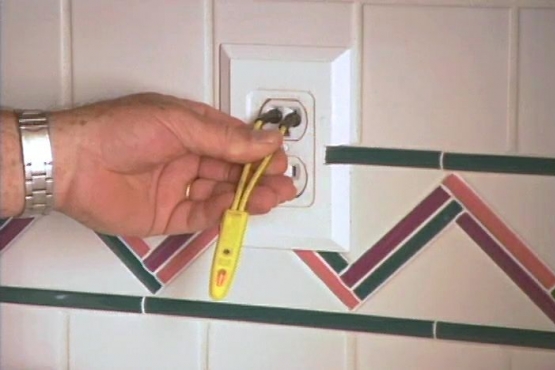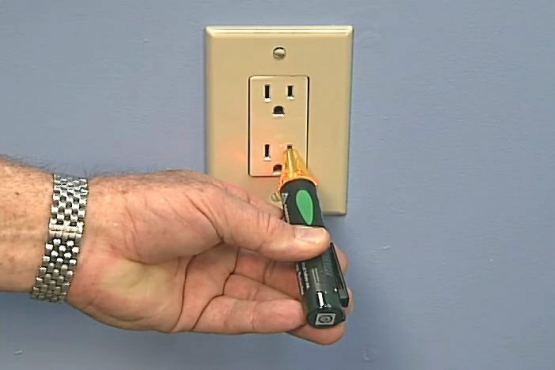How to Install Track Lighting
New Track Lighting can make your workspace more functional
Ron works with a couple to replace their exisitng flouencent lighting with a new track lighting system. With a little bit of planning, and some fairly basic installation, track lighting will allow you to focus the light in your room exactly where you want it.
Read More
Remove Existing Fixtures
Begin by turning off the power at the breaker panel. Use a piece of tape to cover the breaker to ensure that no one mistakenly turns it back on while you are working. Next, remove any covers or shades that may be on the existing fixtures, and then loosen the wire connectors. Once the connectors and wires have been separated, the screws holding the fixtures to the ceiling can be removed.

Plan the New Track Layout
Track lighting is very directional, so first determine the location for the lights based upon the needs that you have. As you make your plan, use painters tape to mark a tentative layout on the ceiling of where you think the track should be installed.

Determine Your Power Supply
In this case, Ron needs to install a junction box where the power supply comes through the ceiling. This is easily done by using a wallboard saw to cut out a template of the junction box. Once the hole is cut, the wires can be pulled through the back of the box and then the box itself can be screwed into the ceiling joist. The track lighting adapter should be screwed directly onto the face of the new junction box and the wires attached to the adapter as described in the instructions that came with your lighting system.

Assemble and Install the Track
Now that you've determined the location of your track lighting, you can remove the painters tape from the ceiling and snap a chalk line to ensure that your tracks are a consistent distance from the wall. Cut the first piece of track to the correct length using a hack saw, and once you've made careful measurements and snapped your line, go ahead and snap the first piece of track into the adapter.

Secure the Track to the Ceiling
The track will be secured to the ceiling with toggle bolts. After the track is all in place, tighten the bolts and install any covers or end pieces that may have come with your track lighting kit.

Install the Fixtures
After the track is securely fastened to the ceiling, you may begin installing the fixtures, keeping in mind the original needs that you were trying to meet when you planned the layout of your system. Remember that each fixture should have a purpose and feel free to continue to make adjustments to the lights until the room has the feel that you wanted to achieve.
Related Tips
Blog Articles
Have You Heard of Landscape Glue?
You love the rustic charm of a gravel walkway, but the constant scattering of stones across your lawn and patio can be a real headache. Whether it’s from pets, lawn mowers, or just foot traffic, it seems impossible to keep those stones in place. Sound familiar? Well, Brian shows us a simple DIY method using landscape glue to keep your gravel path looking pristine and, more importantly, in place.
How to Remove Candle Wax Drips: Two Effective Methods
Candles create a warm and inviting atmosphere, but those pesky wax drips can be a real headache. Luckily, Brian shows us a couple of effective methods to tackle this issue, and they involve two very different temperatures: hot and cold. Here, we'll explore two effective methods: one using cold and the other using heat.
Guide to Hanging on Masonry Walls
Ever wondered how to hang that picture frame or shelf on a brick or concrete wall? It can seem daunting, but with the right tools and techniques, it's a straightforward DIY project. This guide breaks down two common methods: using concrete screws and using anchors, making it easy for you to tackle your next hanging project.










